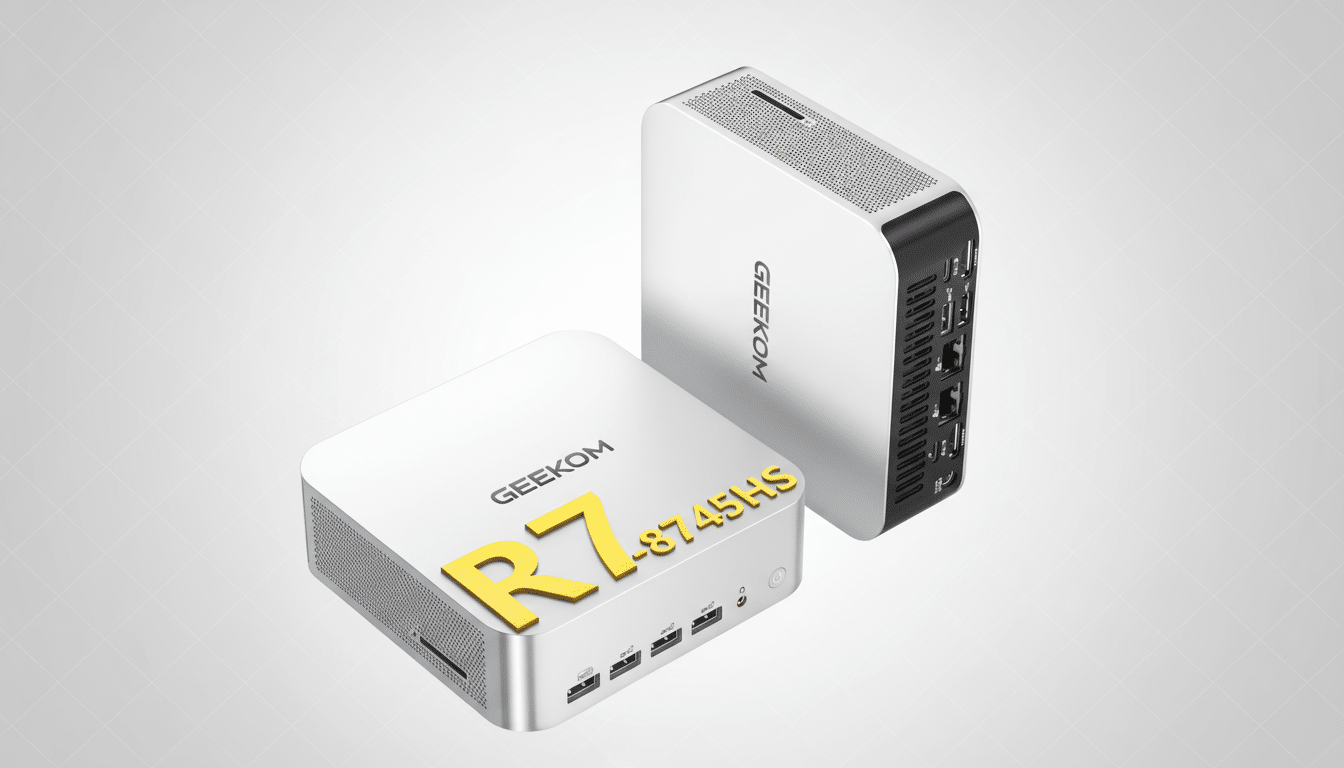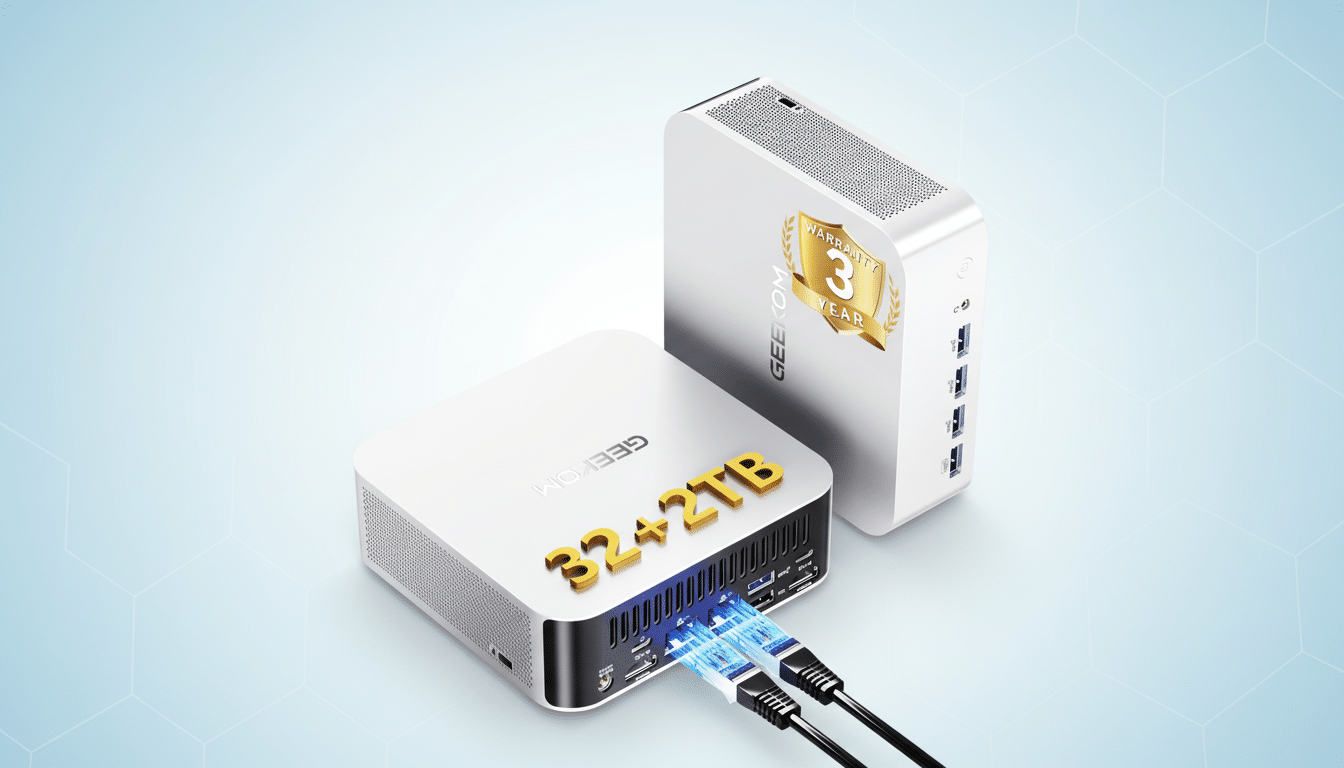If you’ve been browsing for the perfect time to downsize your desktop, this is it. The GEEKOM A8 Max Mini falls to $499, down from its usual $649 selling price—roughly 23% off and the lowest we’ve seen for this configuration. And for a tiny PC with some serious silicon, that price falls squarely in the impulse-buy zone for students, creatives, and home office setups alike.
Mini PCs have gone from niche to mainstream in recent years, as integrated graphics and efficient laptop-class processors continue improving by leaps and bounds. In a market where similar boxes are frequently in the $550 to $800 range, the A8 Max Mini cuts while maintaining just-right specs and ports for most modern workflows.
- What Makes This Mini PC a Smart Buy Right Now
- The Deal in Brief: Price, Savings, and Value
- Performance and Real-World Use for Everyday Tasks
- Ports, Upgrades, and Expandability for Versatility
- How It Compares to Similar Mini PCs and NUCs
- Who Should Buy It and Who Should Consider Alternatives
- Bottom Line: Strong Value for a Compact Mini PC

What Makes This Mini PC a Smart Buy Right Now
Powering the A8 Max Mini is an AMD Ryzen 7 processor alongside a Radeon 780M graphics card, one of the fastest integrated GPUs on the market currently.
It includes 32GB of DDR5 RAM and a 1TB NVMe SSD, as well as Windows 11 Pro—so you can unbox, log in, and get to work without any upgrades or OS installs. The aluminum chassis is premium and solid, with a hand-sized footprint that’s about what you’d get if a polished rose gold Mac mini—this isn’t meant derisively, just in terms of exact dimensions—disappeared to the side of my 24-inch monitor or sat on a shelf.
Windows 11 Pro adds more than it takes away. Windows 11 Pro is more than a “checkbox.” Pro adds some extra icing for small businesses and power users with BitLocker encryption, Remote Desktop, and Hyper-V virtualization—helpful if you plan on running lightweight VMs, maintaining a secure work profile (or just getting a grip on your lawnmower of a PC), or need to do some remote support.
The Deal in Brief: Price, Savings, and Value
Current price: $499. Previous price: $649. Savings: $150 (approximately 23%).
- Current price: $499.
- Previous price: $649.
- Savings: $150 (approximately 23%).
That places the A8 Max Mini below many similarly spec’d competitors from the likes of Minisforum, Beelink, and Asus NUC-branded systems, which often sell for somewhere between $599 to $799 when they include only 32GB RAM plus a 1TB SSD. Pricing can flex when supply does, but at this price point the value proposition is irrefutable.
Industry watchers such as Canalys have reported consistent demand for small desktops during the era of hybrid work, in part because minis stretch budgets even further than full-sized towers and use a fraction of their power and space. And this deal fits squarely into that calculus.
Performance and Real-World Use for Everyday Tasks
The Radeon 780M iGPU has been the go-to choice for playable 1080p esports and accelerated creative apps. In the wild, independent testing through sites like Notebookcheck and UL’s 3DMark regularly puts the 780M at the head of integrated solutions, proving it perfectly capable of running games like Rocket League, Valorant, and Fortnite smoothly with settings that make sense. Creators get hardware AV1 and HEVC support to assist with modern codecs. Timeline scrubbing on lightweight 4K projects is remarkably smooth in apps like DaVinci Resolve or Premiere Pro, provided effects are kept to a minimum.

Inside, the HS-class chip is almost always an 8-core/16-thread design with a configurable TDP of 35–54 W—this means fast compile times and batch photo edits, and it gives you responsive multitasking. In day-to-day use—browser tabs, browser tabs, browser tabs, along with Slack or Teams calls and streaming—the system remained quiet and cool, which is exactly what you’d expect from a tiny desktop that’s going to be out in the open.
Ports, Upgrades, and Expandability for Versatility
The connectivity is also smart: one 40Gbps USB4 port for high-speed peripherals, external storage, or maybe an eGPU enclosure; dual gigabit Ethernet for redundancy or multi-network setups; and plenty of USB-A and HDMI for legacy gear and displays. USB4 will generally allow DisplayPort tunneling, meaning you could potentially drive a couple of 4K monitors if your workflows involve spreadsheets, timelines, and chat.
Storage is also expandable, so you have headroom to add more capacity as libraries grow. Most users will be fine with this 1TB capacity, but it’s good to know that the platform isn’t a dead end, as is often the case with ultrathin laptops. There are competing models that offer 2.5GbE, after all, but the A8 Max Mini falls back on dual 1GbE, which nevertheless is more than enough for most homes and small businesses alike.
How It Compares to Similar Mini PCs and NUCs
Compared against budget-minded Ryzen 7000-series minis such as the Minisforum UM790 Pro or Beelink GTR7, the A8 Max Mini’s value depends on its standard memory and storage. Many competitors match the CPU and iGPU class but put you on the hook for 32GB/1TB. Asus’s NUC-based systems using Intel Core Ultra workhorses this time offer strong media engines and AI capability, though they usually come at a slight premium if similarly specced. If your priorities include a relatively balanced CPU/GPU performance profile, decent thermal control, and a full spec at checkout, it’s hard to beat for the price-per-watt and price-per-gig.
Who Should Buy It and Who Should Consider Alternatives
Those attending school and working from home who are willing to compromise on a quiet environment and desk space will see value in the A8 Max Mini’s footprint as well as power draw. Photography, light 4K edits, and podcast production buyers get a compact box that punches well above its size. Casual and indie gamers can expect fun 1080p play with reasonable settings, while hobbyists might want to have an eGPU on the radar for a future graphics bump via USB4.
If you require top-of-the-line AAA performance at max settings or specific workstation features like ECC memory, you’re still going to want a bigger rig. For just about everyone else, this is the sweet spot where price, performance, and practicality meet.
Bottom Line: Strong Value for a Compact Mini PC
For a mere $499, you get a rare combination of up-to-date AMD performance, roomy memory and storage, and some well-considered I/O in a compact, premium construction. Deals come and go, but this is the sort that rewires the value curve of mini PCs. If a neat and capable desktop has been on your shortlist, now is the time to hop on it.

